Wood Cutting: How to Do it Right

If you live near woodland or if you have an orchard to maintain, you are lucky enough to have a plentiful supply of free firewood with which to heat your home using a wood-burning stove or fireplace, or to grill food on a wood-burning barbecue.
Even pruning trees in the garden can provide you with a decent amount of small-sized pieces of wood for lighting and rekindling a fire. Today's topic is how to cut your own wood and what tools to use. In addition, we provide some tips on how to season firewood.
How to cut your own wood
To cut firewood into suitably sized pieces to fit in your stove or fireplace, you will need to start with a whole tree trunk or a log section. In any case, before you start chopping your own wood, it is best to prepare so that you can work in the most practical and safest way possible, so:
-
Whether in the garden or in woodland, prepare a work area by clearing away obstacles so that you have enough space perform all the necessary tasks, specifically sawing, splitting, cutting, transporting and stacking the wood.
-
Organise the area as if it was an assembly line, so that you can work quickly and efficiently.
-
Wear protective cut-resistant clothing, which is essential when using a chainsaw or any other woodcutting tool.
-
If possible, instead of going it alone, work with someone to share the effort of making firewood and provide an extra guarantee of safety.
It is important that the woodcutting equipment works perfectly: for example, make sure that the chainsaw teeth are sharp—get yourself a round file to sharpen them—and make sure that you always have a supply of fuel and chain oil on hand, which you can carry altogether in a dual-purpose can. If you want to know more, read our in-depth analysis on chainsaw accessories.
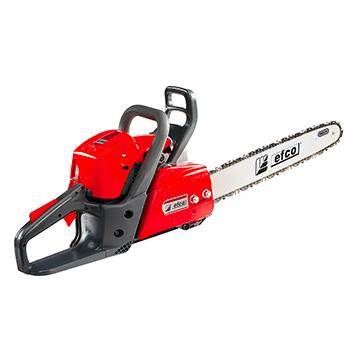
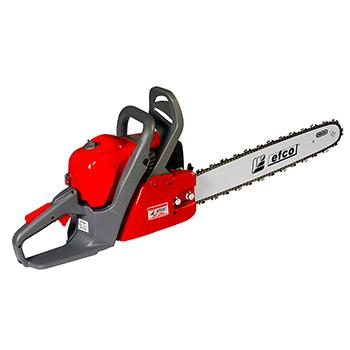
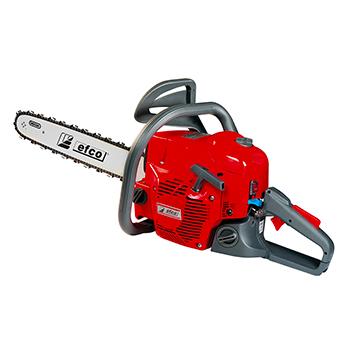
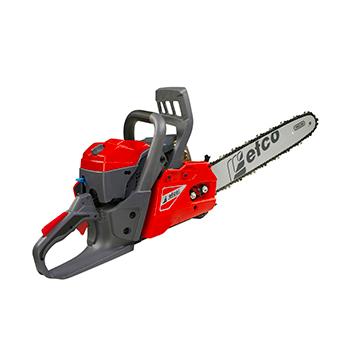
How to split firewood
If you have a trunk or some large branches that can be reduced to firewood, first cut them with your chainsaw into manageable rounds measuring about one metre long. In order to cut them to similar lengths so that you can handle them more easily, make reference marks on the trunk with forestry chalk (or ordinary blackboard chalk), spray paint, or by scoring them with a billhook or sickle.
If you have a stable and level surface, you can cut small-sized trunks into rounds directly on the ground. In this case, it is important that the chain of the chainsaw never touches the ground:
-
Secure the trunk so that it cannot move, using wedges if necessary.
-
Cut vertically from top to bottom with the chainsaw horizontal, provided that there is space under the trunk.
-
Otherwise, if the trunk is resting on the ground, keep the chainsaw at an angle.
Regardless of the cutting method you use, to cut up a small trunk for firewood all you need is a small petrol engine chainsaw such as the Efco 1.5 kW MT 3500 S or the 1.9 kW MT 4110, or even a medium power chainsaw like the 2.5 kW MT 5200.
If the ground surface is unsuitable for laying the trunk on it, you can avoid straining your back by creating a DIY support. Simply cut a V-shaped notch into the top of a standing log, into which you can place the trunk, repositioning it as you cut.
Once you have cut up the trunk, proceed to split each meter-long round, first into halves and then into quarters (or thinner wedges, depending on the size of the trunk). A fairly easy way to split wood by yourself is to:
-
Lay the log section on the ground and secure it so that it cannot move.
-
Make a cut along the entire length of the log using a chainsaw.
-
Insert some metal wedges into the cut.
-
Strike the wedges with a sledgehammer until the log splits.
As an alternative to a chainsaw, wedges and sledgehammer, you can split the rounds by hand with an axe or motorised log splitter. Once you have split the wood, you are left with long billets that need to be sawn to the right size: around 25 cm for a stove and 35 cm for a fireplace. At this point, all you need is a chainsaw and a sawhorse to obtain your firewood.
Besides using a chainsaw and sawhorse to reduce billets to size, you can also use them to cut firewood directly from thin trunks and thicker branches that you have sawn off with manual pruning tools or a telescopic pruner:
-
Mark the wood before cutting, so as to obtain pieces of similar size that are easier to stack for seasoning.
-
Secure the wood to the sawhorse (or bulk log sawhorse, if you want to work on several pieces at a time).
-
Cut it with a chainsaw: alternatively, if you are cutting thinner branches to size, a simple pruning saw may suffice.
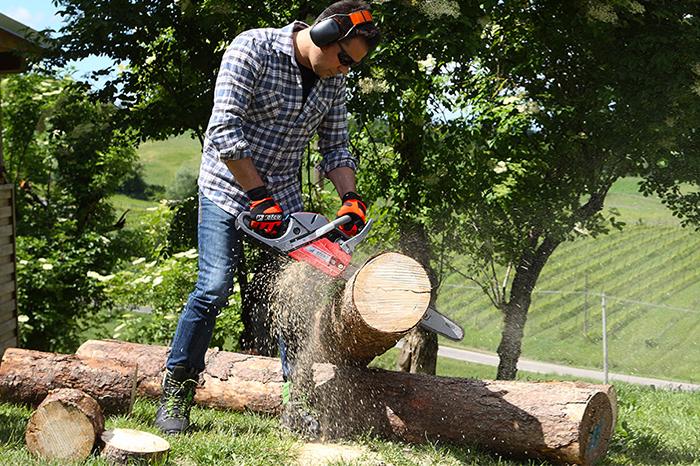
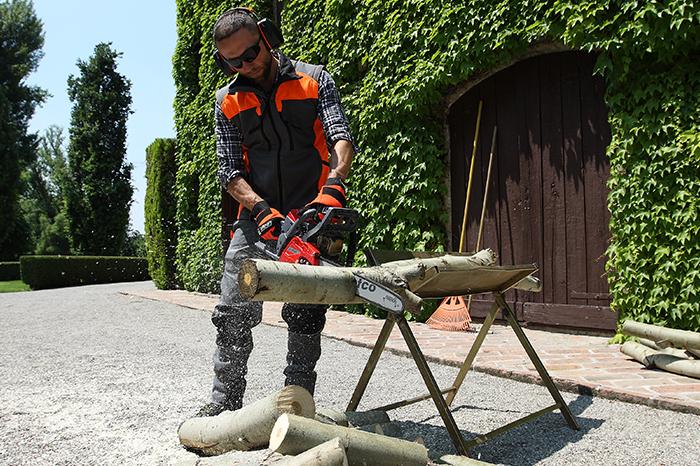
How to season firewood after cutting
As you well know, firewood should not be used immediately after cutting, but first seasoned (dried). You can stack the metre-long billets in a woodshed to let them dry out, then cut them down to size when you're ready to put them in the stove or fireplace. Alternatively, you can shorten them before stacking and seasoning them. Generally speaking, green (fresh) wood is easier to cut than dry wood, and wood dries faster in small pieces. Once seasoned, it is ready for the fire.
But how do you season firewood? It should be seasoned in a dry and well-ventilated place, away from humidity and sheltered from the rain. You can use an existing outbuilding as a woodshed (such as a garage), buy a storage shed or build one yourself, for example using wooden pallets as a base and a tough waterproof sheet as a cover.



